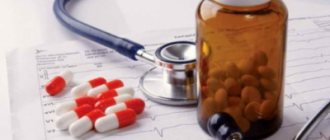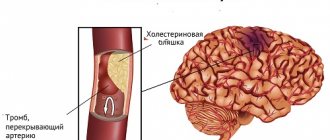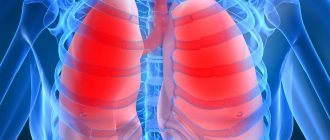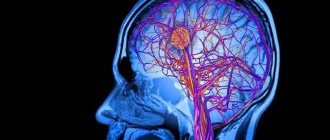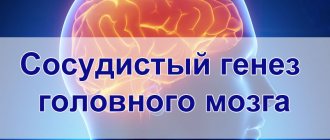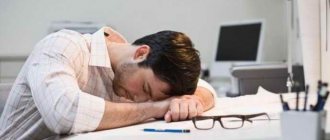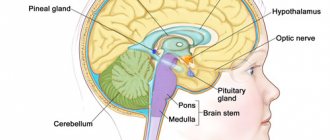general information
Rehabilitation not after hemorrhage cannot be delayed. Paralyzed limbs begin to move after the patient's condition improves. If treatment for stroke with folk remedies is started later, the condition will improve with great difficulty.
Patients often experience depression and resist exercise and various types of therapy. In such a situation, you need to understand that such a condition can arise as a result of damage to a certain area of the brain. Such patients require a tactful approach and proper stimulation.
Post-stroke diet
After a stroke, you cannot eat as before. A person should cook with vegetable oils: olive, sunflower, soybean, rapeseed. You are allowed to consume no more than 120 grams of meat per day.
Note! Seafood is especially healthy and is recommended to be included in your daily diet.
It is necessary to eat fermented milk products, eggs, bran bread, fresh vegetables, dried fruits. The daily volume of fluid consumed should be at least 1.5 liters. Homemade cranberry fruit drinks and compotes effectively remove excess liquid. Food can be steamed, baked, stewed. It is forbidden to consume confectionery, fried, salty foods.
Treatment of the consequences of the disease with herbs is used at the last stage of therapy as a concomitant treatment. Plants used in folk recipes protect the walls of blood vessels and brain structures from destruction. Based on the form of the disease and the presence of other pathologies, different fees are used.
The recovery period is accelerated if you combine phytotherapeutic methods with drug therapy, diet, and massage.
Types of strokes
According to the mechanism of development, stroke is classified into 2 groups: ischemic and hemorrhagic. An ischemic stroke occurs after blockage of a cerebral artery by thrombi, blood clots, which appears after the disintegration of atherosclerotic plaques. Nerve cells are poorly supplied with oxygen; if the damaged area is not supplied with blood from nearby vessels, the neurons begin to die .
Often the lumen of the blood vessels is blocked by air bubbles or fat. This is how an embolism occurs. Blood clots may appear in the left ventricle. Vessels are compressed by growing tumors, cysts, and hematomas that occur after injuries.
Hemorrhagic stroke is diagnosed less frequently, but death after such a hemorrhage occurs more often. The cause of the disorder is a rupture of the vessel wall. With this type of stroke, cells die due to lack of oxygen. Blood coming from the artery is compressed or spilled into the brain, making the normal functioning of the nervous system difficult. Based on the location of the vessel damage, hemorrhagic strokes are divided into: subarachnoid and intracerebral.
Transfer to the general ward
When transferred to a general ward of a hospital after a stroke, the patient must meet the following requirements:
- he does not need a ventilator;
- the person is conscious, he not only lies, but can move if there is no paralysis;
- the pulse is normal, and pressure drops do not occur;
- the risk of recurrent stroke is reduced.
Only if all indicators are normal does the person continue to lie in the general ward of the hospital, in the neurology department. This is where the rehabilitation period begins, which includes drug therapy and a set of therapeutic exercises.
After 3 weeks in the general ward, the patient is sent home for further outpatient treatment. If a person was working at the time of the attack, he is issued a certificate of incapacity for work. In this case, the length of sick leave depends on the type of pathology and disorders that arose against the background of a stroke.
In severe forms of stroke, a disability is often assigned, and the person is released from his usual work. A medical and social examination must establish and assign a disability group. It should be noted that patients after a rupture of an aneurysm leading to a hemorrhagic stroke remain in intensive care for at least 60 days. After this, they receive sick leave for at least 4 months.
Symptoms
Stroke symptoms develop at different rates in women and men. The hemorrhagic form appears quickly. Patients experience increased blood pressure and headaches. The symptom is often located in the left or right hemisphere of the brain. Then the patient loses consciousness, the face becomes red, breathing wheezes, and vomiting occurs.
Convulsions appear, and the affected areas of the body are more susceptible to these symptoms. When a patient experiences a stroke, one part of the torso becomes paralyzed. When the symptoms are localized on the right side, speech defects occur, and when the left side suffers, mental problems appear.
Ischemic stroke manifests itself more slowly compared to hemorrhagic stroke . The pain does not occur for a long time. The hands and cheek become a little numb, vision becomes insufficiently clear, speech changes, and weakness occurs in one part of the body. Gradually, the head begins to feel dizzy, vomiting and nausea occur, and speech function becomes clearly impaired.
The first signs of a stroke, regardless of gender, are easy to identify. You must first smile, say something, raise your hands above your head. If the smile is too crooked, asymmetrical, the words are illegible, and the hands rise to different heights, you need to call a doctor.
First aid for stroke
Before the specialist arrives, the patient must be positioned so that his legs are lower than his head. Things that restrict breathing must be removed to ensure a flow of fresh air into the room. When the patient begins to feel nauseous, the head should be turned to the side so that the contents of the stomach do not enter the lungs. The patient's mouth should be rinsed after vomiting.
You'll have to measure your pressure. If the level is high, you need to take medicine. If you don’t have the necessary tablets, you will have to use a heating pad filled with hot liquid, which is placed on your feet . After the doctor arrives, you need to describe the patient’s condition in order to determine the nature of the stroke as quickly as possible and begin treatment.
Medicines
Medications have a significant impact in rehabilitation. They eliminate brain dysfunction. Medicines are prescribed only by a specialist; it is not recommended to choose medications yourself. This is life-threatening and often leads to repeated hemorrhages.
It is necessary to undergo a course of treatment with the selected drugs. Let's list a few of their categories:
- Nootropics are drugs that have a beneficial effect on the functioning of the psyche. Memory and intellectual activity are stimulated.
- Drugs that stimulate blood flow to the head, containing aspirin.
- Drugs that stimulate metabolism in brain cells.
- The combination of several drugs is convenient.
The general condition of the patient is stabilized by means of other categories. Drugs that reduce the excitability of the central nervous system and relieve tension in muscle tissue are often used. Antidepressants are popular in recovery.
The sequence of actions required for recovery must be performed precisely. In the first stages of rehabilitation, medications are administered intravenously. When patients can take medications on their own, they begin taking pills. Medicines that do not give the desired effect or cause harm to the body due to its individual characteristics are replaced with others.
The course of taking cerebroprotectors is completed 2 times a year. Such products stimulate blood circulation and stabilize the functioning of the head. Medicines are administered intravenously.
Therapy to support health status - video
Exercise therapy allows you to effectively restore health after a stroke. Muscle tone may develop. Gradually, patients begin to move their limbs, move around, and eat. Over time, he can serve himself normally.
Treatment procedures include the following:
- The patient purposefully moves his fingers and all joints.
- The patient is positioned on the bed in a position where the legs remain down. Each leg rises and falls alternately. Such exercises can be performed after preliminary development of the joints.
- The following exercises are used to develop brushes. A towel is hung over the lying patient, through which the hand is threaded, and then various movements are performed.
- Exercises with elastic bands help maintain joint mobility. The ring is threaded between the feet and hands, then patients try to spread their arms and legs as wide as possible.
- The bent limb is straightened and tied to a splint for half an hour, then released. This is necessary to improve the stretching of the ligaments.
Stages of treatment after an attack
There are 3 stages of a patient’s stay in the hospital after a stroke: pre-hospital, treatment in intensive care or intensive care, and stay in the general ward, where rehabilitation begins.
If 30 days is not enough, the hospital conducts a medical and social examination, and, if necessary, extends the length of stay in the hospital. The examination also establishes the process of individual rehabilitation of the patient.
Use of traditional medicine
Treatment of stroke with folk remedies is practiced in combination with the above methods for better results. Needles are used to eliminate the consequences of a stroke. This product cleanses blood vessels. Use a handful of pine needles for 1 liter of boiling water and let it sit until the morning . Finely chop lemon into the decoction and infuse for another 2 hours. Use the product 3-4 times a day before meals.
After a stroke, chewing gum is beneficial. The head muscles are stimulated in this way, and the blood supply to the brain improves.
Japanese Sophora
Japanese Sophora has a positive effect on the body after a stroke. Fresh or dried fruits are poured with alcohol, the tincture is prepared within 3 weeks. The course of therapy is 6 months. You need to take 10 drops.
This tincture is rubbed into paralyzed areas before bed. Compresses are prepared on its basis and applied to the back of the head. To prepare, you need to fold gauze in several layers, then soak it in tincture . Compress paper is placed on top and secured with a soft cloth. Compresses are prepared 2-3 times a day. If a burn occurs on the skin after this, you need to treat it with a water-based cream before the procedure.
Treatment of stroke is stimulated by the use of ascorbic acid. A decoction based on rosehip is often used and is consumed instead of tea. After 3 months, blood pressure improves and dizziness is relieved. The functionality of paralyzed limbs is restored.
Bay leaf and rendered fat
The following traditional medicines can help eliminate the consequences of a stroke:
- 2-3 tbsp. lie bay leaves are filled with vegetable oil. The medicine is infused in a dark place for 10 days. The resulting ointment is rubbed into the limbs after a warm bath.
- Melted fat is mixed with table salt, the paralyzed area of the body is treated, then wrapped in cloth and polyethylene until the morning.
Mumiyo
Shilajit helps get rid of blood clots and restores damaged tissue. Therefore, the ingredient is used to eliminate the consequences of a stroke. The plant is diluted with aloe juice, consumed in 1 teaspoon. 2 times a day after waking up before meals and before bedtime.
How to eliminate the effects of a pollen stroke?
Tibetan lofant is a unique herb endowed with medicinal effects and provides good biostimulation . Since there are no side effects with this medicine, it can be used for a long time. Lofant improves well-being in hypertensive patients, with atherosclerosis and after cerebral hemorrhage, and reduces cholesterol levels in the blood.
An alcohol tincture is prepared based on the plant, consumed before meals, diluted with drinking water 2 times a day for a month. Then there is a break for a week. After a stroke, at least 3 courses are given.
Other useful plants
We list the plants that are most effective:
- Celandine is brewed for 15 minutes, the liquid is consumed 3 times a day before meals for 3 weeks.
- Maryin root is brewed in hot water for an hour, use 1 tbsp. lie 4-5 times a day for 30 days.
- The sage tincture is prepared within 5 minutes and poured into the bath.
- Juniper is used to make an alcohol tincture and rubbed into numb areas of the patient’s body.
Resuscitation actions
Carrying out resuscitation for a stroke is the most important measure through which it is possible to save a person from death. All activities are carried out in a special resuscitation room. There the patient is thoroughly examined and connected to equipment that shows blood pressure, pulse, and respiration.
Stroke patients are placed in intensive care in order to quickly diagnose the body. Indeed, in case of acute cerebrovascular accident, it is necessary to quickly determine the type of pathology and severity. The intensive care unit has all the necessary conditions for a quick examination of the patient.
In some cases, a person who has had a stroke may develop a coma. In such a situation, in intensive care conditions, doctors do everything to maintain the vital functions of the body. To do this, install sensors that monitor blood pressure and pulse.
A feeding tube is inserted for feeding. The menu uses food in the form of special liquid mixtures or purees for children. It is also necessary to change the position of the patient's body every 2 hours to avoid bedsores.
ATTENTION!!!
The patient should be admitted to intensive care as early as possible. Emergency assistance should be provided in the first 1.5–3 hours.
Pine cones for stroke
The medicine is prepared independently. For this purpose, pine cones that have not yet blossomed are used. In this state they contain seeds and the greatest amount of useful substances.
Vodka tincture. The cones are washed with water, poured into a container, and filled with vodka. The product is infused away from sunlight for 2 weeks. Then the liquid is cleared through gauze, the tincture should be red, it should be consumed 2-3 times a day, 1 tea. lie within 3 weeks.
Then you need to take a break for a week and start taking the medicine again. To get a good result, you need to carry out 3 treatment courses within a year. Then there is a pause for 6 months.
It is unacceptable to collect cones from the ground; when they are picked, you need to separate whole fruits from wormy ones. If toxins enter a plant, it becomes poisonous and causes harm to health.
The right time to collect pine cones starts in March and continues until the end of April. May is also taken into account; during this period you can also pick green plants. During the period from June to October, the healing properties of the cones are lost . During this period, the cones are largely washed by rainwater, they contain a lot of moisture, then they dry out again under the sun, the liquid evaporates. With this process, all the medicinal resins come out of the cones.
If alcohol is contraindicated for the patient, a decoction of 5 finely chopped cones should be consumed. You need to prepare this remedy for 5 minutes, consume 1-3 times a day in small portions after meals.
Duration of sick leave
So, sick leave is issued only when the threat to life has passed, the person has left intensive care after a stroke and has undergone a course of treatment. There is no single standard for setting deadlines. It all depends on the disorder, the amount of skills lost and the recovery process:
- in case of micro-stroke and minor violations, sick leave is issued for 3 months;
- moderate stroke is treated for at least 3 months, it can be increased without commission to 4 months;
- with a severe stroke, rehabilitation is often required for 6-8 months, and the person is given temporary disability.
If during rehabilitation, while on sick leave, a repeated relapse occurs, then treatment is extended for 2.5 months.
Fir cones
These ingredients are also beneficial for stroke. Fir cones perfectly purify the air, so they are suitable for storage in domestic conditions. They have antispasmodic and antimicrobial effects, so their products are effective against colds and infections.
Tinctures are used for inhalation to combat osteochondrosis and bronchial asthma. Fir cones contain a lot of vitamin C.
First recipe
Fir cones are finely chopped, poured into a three-liter jar, and filled with chilled water after boiling. The resulting mixture is left in a room without light for fermentation. After 10 days, the tincture is filtered. After cleaning, add apple cider vinegar to the liquid.
It is advisable to use homemade products. The tincture is added to tea every day. This prophylactic remedy is used for six months, then you need to take a short break.
Second recipe
The tincture of fir cones is made according to a different recipe. Apple cider vinegar is used to prepare it. The cones crumble finely and are filled with water. Wait for the mixture to ferment, after 10 days the tincture is filtered, the plant is filled with fresh water.
In a week, the product will be ready, you can use it every day, a maximum of 30 ml. It is possible to obtain an aromatic medicine with a pleasant taste.
Hydrogen peroxide
According to experts, this medicine has no contraindications. Hydrogen peroxide should not be consumed if the body is individually intolerant. The medicine is used in the fight against numerous pathologies and helps to recover after a stroke.
The components improve metabolism. Intravenous use is not practiced, but complications after a stroke can be avoided if such an injection is given on time. This solution is used for rinsing.
Stroke is prevented if such procedures are performed regularly. Rinsing is carried out not only for preventive purposes, but also to clean the mouth. Doctors advise using a 3% solution.
